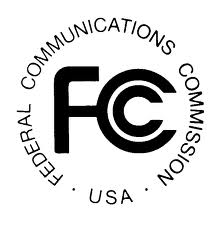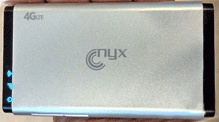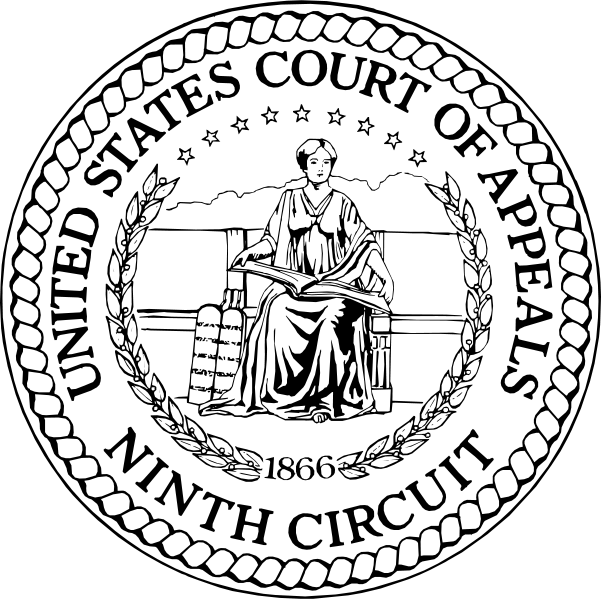The 8th Circuit has now adopted the minority view of the Circuits that a denial of a cell site permit does not need to be made in a writing that is separate from the rest of administrative record. In doing so, the 8th Circuit dives into the thinking of the various Circuits that have addressed this question.
The U.S. Supreme Court is set to resolve the Circuit split when it hears and decides T-Mobile S., LLC v. City of Roswell, Ga., 731 F.3d 1213 (11th Cir. 2013), cert. granted, 134 S. Ct. 2136 (2014).
The district court noted that legal authorities are split on the meaning of “in writing” in the TCA and that the question remains open in this circuit. The majority rule—followed by the First, Seventh, and Ninth Circuits, and urged by Viaero—requires that a decision “(1) be separate from the written record; (2) describe the reasons for the denial; and (3) contain a sufficient explanation of the reasons for the denial to allow a reviewing court to evaluate the evidence in the record that supports those reasons.” New Par v. City of Saginaw, 301 F.3d 390, 395–96 (6th Cir. 2002) (citing Sw. Bell Mobile Sys., Inc. v. Todd, 244 F.3d 51, 59–60 (1st Cir. 2001)). The district court noted that this circuit has assumed without deciding that the majority rule is correct. See Sprint Spectrum, L.P. v. Platte Cnty, Mo., 578 F.3d 727, 731–32 (8th Cir. 2009).
The minority rule—articulated by the Sixth Circuit, urged by the City, and ultimately adopted by the district court—does not require that the decision and record be separate writings as long as the record permits the reviewing court to “focus with precision on the action that was taken and the reasons supporting such action.” Omnipoint Holdings, Inc. v. City of Southfield, 355 F.3d 601, 606 (6th Cir. 2004). Here, the district court found that the City Council resolution satisfied the “in writing” requirement because the motion and meeting minutes reflect the action taken and “contained an explanation of the reasons sufficient to allow the Court to evaluate the evidence in the record that supports those reasons.”
A. “In writing”
Courts have adopted four different interpretations of the TCA’s “in writing” requirement. The first, adopted by a number of district 2 courts, requires that the denial itself and the “written record” be separate documents. Smart SMR of N.Y., Inc. v. Zoning Comm’n of Stratford, 995 F. Supp. 52, 57 (D. Conn. 1998). The Stratford court reasoned that because “the statute draws a distinction between the writtendecision and the written record, they can clearly not be the same document.” Id. (quoting AT&T Wireless PCS, Inc. v. City Council of Virginia Beach, 979 F. Supp. 416, 428 (E.D. Va. 1997), rev’d, 155 F.3d 423 (4th Cir. 1998)). “Additionally, the decision ‘must contain written findings of fact tied to the evidence of record.'” Id. at 56 (quoting AT&T Wireless Servs. of Fla., Inc. v. Orange Cnty, 982 F. Supp. 856, 859 (M.D. Fla. 1997). In a later case, the same court determined that “[a] local zoning authority must issue a decision in writing setting forth the reasons for the decision and linking its conclusions to evidence in the record.” Omnipoint Commc’ns., Inc. v. Planning & Zoning Comm’n of Wallingford, 83 F. Supp. 2d 306, 309 (D. Conn. 2000) (citation omitted). The Wallingford court reasoned that “[b]y failing to provide reasons for its decision, the Commission places the burden on this Court to wade through the record below in an attempt to discern the Commission’s rationale.” Id. (quoting Smart SMR, 995 F. Supp. at 57). The Stratford/Wallingford rule effectively requires formal findings of fact and conclusions of law, akin to the strictures of the Administrative Procedure Act (APA). See Todd, 244 F.3d at 59.
The second approach, considered the majority rule, was articulated by the First Circuit in Todd. The Todd court held that “the TCA requires local boards to issue a written denial separate from the written record. That written denial must contain a sufficient explanation of the reasons for the permit denial to allow a reviewing court to evaluate the evidence in the record supporting those reasons.” Id. at 60. The Seventh and Ninth Circuits subsequently adopted this interpretation. See Helcher v. Dearborn Cnty, 595 F.3d 710, 719 (7th Cir. 2010); MetroPCS, Inc. v. City & Cnty of S.F., 400 F.3d 715, 722 (9th Cir. 2005).
The First Circuit rejected the formal requirement of “findings of fact” in Wallingford as having “no basis in the language of the [TCA].” Todd, 244 F.3d at 59. The court held that because local boards “are primarily staffed by laypeople. . . . it is not realistic to expect highly detailed findings of fact and conclusions of law.” Id. at 59–60. The court nevertheless found that the approach adopted by the Fourth and Eleventh Circuits infra too light, holding that “permitting local boards to issue written denials that give no reasons for a decision would frustrate meaningful judicial review, even where the written record may offer some guidance as to the board’s rationale.” Id. at 60. The court noted that “[t]he TCA distinguishes between a written denial and a written record, thus indicating that the record cannot be a substitute for a separate denial.” Id. (citation omitted). As such, “[e]ven where the record reflects unmistakably the Board’s reason for denying a permit, allowing the written record to serve as the writing would contradict the language of the [TCA].” Id. (citation omitted). In short, the Todd rule requires that a denial “must (1) be separate from the written record; (2) describe the reasons for the denial; and (3) contain a sufficient explanation of the reasons for the denial to allow a reviewing court to evaluate the evidence in the record that supports those reasons.” New Par, 301 F.3d at 395–96.
The Sixth Circuit developed a third approach to the TCA’s “in writing” requirement. In New Par, the court adopted the Todd rule, but the court took a different tack in Southfield. In Southfield, the city council denied a permit after a public hearing. Southfield, 355 F.3d at 603. In a formal resolution, the council voted to deny the application and listed eight reasons for the denial. Id. The minutes of the council meeting, which contained the resolution, constituted the only “writing” containing the denial. Id. at 606. The Southfield court noted that “there is no guidance in New Par as to what constitutes the written record.” Id. at 605. The court opined that “the TCA makes no mention of the writing being in a separate document.” Id. at 606. The court reasoned that because the city council speaks through its resolutions, the “formal resolution is a writing separate from the hearing record.” Id. “Although the minutes of a council meeting will encompass all the matters considered by the council at that meeting, each resolution deals with only one discrete subject.” Id. The court found that this was sufficient to meet the “separate writing” requirement of the TCA because “[t]he primary purpose of the separate writing requirement is to allow a reviewing court to focus with precision on the action that was taken and the reasons supporting such action.” Id. Thus the Southfield rule requires only that a local board’s action be sufficiently discrete to allow a reviewing court to identify the action taken and why it was taken.
The Fourth and Eleventh Circuits developed yet a fourth interpretation of “in writing,” on the opposite end of the spectrum from Wallingford. In Virginia Beach, the Fourth Circuit confronted the following facts:
The Council ultimately voted unanimously to deny the application, a decision recorded both in a two-page summary of the minutes—describing the application, listing the names and views of all who testified at the hearing, and recording the votes of each councilman—and in a letter from the Planning Commission to the City Council describing the application and stamped with the word “DENIED” and the date of the City Council’s vote. Consistent with its usual practice, the Council did not generate written findings of fact concerning its vote, nor did it produce a written explanation of the basis for its vote.
155 F.3d at 425. The court held that “the City Council’s decision clearly was ‘in writing.'” Id. at 429. The following year, the court held that “the secretary [of the city council] writing ‘Denied’ on the first page of AT&T’s application, in the stamped form for approval or denial of this and similar requests, fulfills the ‘in writing’ requirement of § 332(c)(7)(B)(iii).” AT&T Wireless PCS, Inc. v. Winston-Salem Zoning Bd. of Adjustment, 172 F.3d 307, 312 (4th Cir. 1999).
Like the Todd court, the Fourth Circuit rejected the Wallingford “findings of fact” rule, holding that while the APA requires “a statement of . . . findings and conclusions, and the reasons or basis therefor,” § 332 of the TCA contains no such requirement. Virginia Beach, 155 F.3d at 429–30. Noting that “Congress knows how to demand findings and explanations” and did not do so in § 332, the court reasoned that “the simple requirement of a ‘decision . . . in writing’ cannot reasonably be inflated into a requirement of a ‘statement of . . . findings and conclusions, and the reasons or basis therefor.'” Id. at 430. The court held that the “substantial evidence” requirement—not the “in writing” clause—ensured that the court received enough information to allow for effective judicial review. Id.
The Eleventh Circuit similarly held that the “in writing” requirement is a light burden. T-Mobile S., LLC v. City of Milton, Ga., 728 F.3d 1274 (11th Cir. 2013). Like North Platte, the City of Milton first addressed a permit for construction of a telecom tower through a planning commission (in Milton, the city considered three separate permits for three proposed tower locations). Id. at 1277. The commission then made a recommendation to the city council. Id. at 1278. After a public hearing, individual city council members moved to deny two of the applications and “stated on the record five ‘not exhaustive’ reasons for denial,” whereupon the city council voted to deny the applications. Id. The city council subsequently sent letters informing T-Mobile of the denials but did not state the reasons for them. Id. at 1279. The hearings were recorded, transcribed, and memorialized in the minutes, which “detail[ed] the reasons given in support of and in opposition to each application, and the motions and their grounds, and recite[d] the unanimous vote on them.” Id. at 1279–80.
The Milton court rejected both the Wallingford and Todd (and implicitly New Par and Southfield) rules as expansions of the statutory text. The court reasoned:
The words of the statute we are interpreting require that the decision on a cell tower construction permit application be “in writing,” not that the decision be “in a separate writing” or in a “writing separate from the transcript of the hearing and the minutes of the meeting in which the hearing was held” or “in a single writing that itself contains all of the grounds and explanations for the decision.” See 47 U.S.C. § 332(c)(7)(B)(iii). So, to the extent that the decision must contain grounds or reasons or explanations, it is sufficient if those are contained in a different written document or documents that the applicant is given or has access to. All of the written documents should be considered collectively in deciding if the decision, whatever it must include, is in writing.
Id. at 1285.
We are persuaded that the Fourth and Eleventh Circuits have articulated the better rule. Nowhere does the statutory text require that the denial and the “written record” be separate writings. Section 332 requires only that the denial and the record both be written. Section 332 does not require that the written denial state the reasons for the denial. Congress may require an agency or board to state its findings. See, e.g., 5 U.S.C. § 557(c). Congress did not do so here.
Here, the parties agree that the City Council’s decision was written: the City Council passed and memorialized a formal resolution. The TCA requires no more than this. The City did not run afoul of the TCA by recording its decision in the “written record.”
III. Conclusion
The judgment of the district court is affirmed.


 The U.S. Court of Appeals for the Ninth Circuit has issued (and set for publication) what will inevitably become a heavily cited decision about wireless siting. This case is the logical next step in the line of MetroPCS v. San Francisco and T-Mobile v. Anacortes, albeit not as the wireless industry would have it.
The U.S. Court of Appeals for the Ninth Circuit has issued (and set for publication) what will inevitably become a heavily cited decision about wireless siting. This case is the logical next step in the line of MetroPCS v. San Francisco and T-Mobile v. Anacortes, albeit not as the wireless industry would have it.